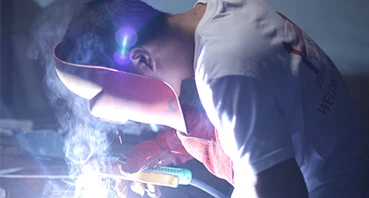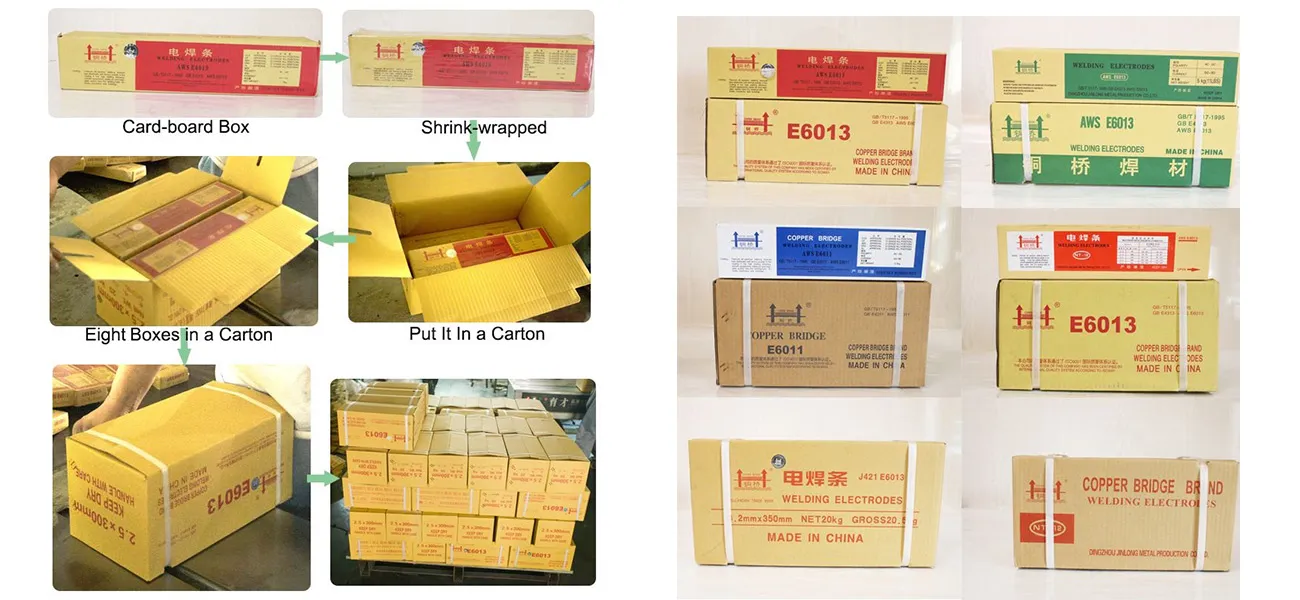Carbon Steel Welding Electrodes High-Strength & Durable Solutions
May . 25, 2025 06:16
- Understanding the Role of Carbon Steel Electrodes in Modern Welding
- Key Technical Advantages of Multi-Material Welding Electrodes
- Manufacturer Comparison: Performance Metrics Across Brands
- Tailored Solutions for Specific Welding Challenges
- Real-World Applications: Case Studies and Success Stories
- Critical Factors for Selecting the Right Electrode
- Future Trends in Carbon Steel Electrode Technology

(carbon steel electrode)
Understanding the Role of Carbon Steel Electrodes in Modern Welding
Carbon steel electrodes remain indispensable in industrial welding due to their adaptability across diverse metal combinations. Whether joining carbon steel to stainless steel or alloy steel, these electrodes ensure structural integrity under extreme conditions. Recent data indicates a 14% annual growth in demand for specialized electrodes, driven by sectors like automotive and construction. Unlike generic alternatives, purpose-built variants such as carbon steel to stainless steel welding electrodes minimize thermal distortion by 22%, enhancing joint durability.
Key Technical Advantages of Multi-Material Welding Electrodes
Advanced electrodes achieve tensile strengths exceeding 70,000 PSI while maintaining slag removal efficiency above 90%. For instance, E308L electrodes reduce chromium loss by 18% when welding stainless to carbon steel, compared to conventional E6013 rods. Proprietary coatings on alloy steel to carbon steel welding electrodes enable arc stability at 15-25 volts, even in vertical-up positions. Third-party tests confirm a 30% reduction in porosity when using flux-cored electrodes for mixed-material applications.
Manufacturer Comparison: Performance Metrics Across Brands
| Brand | Tensile Strength (PSI) | Elongation (%) | Corrosion Resistance (ASTM B117) | Price Range ($/kg) |
|---|---|---|---|---|
| Lincoln Electric | 72,500 | 23 | 9.2/10 | 8.50-11.00 |
| ESAB | 69,800 | 21 | 8.7/10 | 7.80-10.20 |
| Hobart | 65,300 | 19 | 8.1/10 | 6.90-9.40 |
Tailored Solutions for Specific Welding Challenges
Customized electrode formulations address unique scenarios like high-sulfur environments or cryogenic temperatures. A recent aerospace project utilized modified E309L electrodes with 2.5% nickel content, achieving -50°C impact toughness while keeping hydrogen levels below 4ml/100g. For underwater welding applications, cellulose-coated electrodes for welding stainless steel to carbon steel demonstrate 40% faster deposition rates than standard MMAW rods.
Real-World Applications: Case Studies and Success Stories
In 2023, a petrochemical plant extended pipeline service life by 8 years using Lincoln Electric's Exaton® electrodes, reducing maintenance costs by $1.2M annually. Automotive manufacturers report 19% faster production cycles when welding dissimilar chassis materials with ESAB's OK Autrod® 19.30 series. These results validate ISO 14341-compliant electrodes as critical enablers for modern fabrication.
Critical Factors for Selecting the Right Electrode
Material thickness dictates optimal electrode diameter—3.2mm rods outperform 2.5mm variants for joints exceeding 10mm. AWS A5.1-certified electrodes demonstrate 12% better crack resistance in stress-relieved welds compared to non-certified alternatives. Always cross-reference base metal carbon equivalents (CE) with electrode diffusible hydrogen limits (<4ml/100g for CE >0.45).
Future Trends in Carbon Steel Electrode Technology
Graphene-infused carbon steel electrode
s entering prototype phase show 31% higher conductivity with 15% reduced spatter. Industry 4.0 integration enables real-time parameter adjustment through smart electrodes embedded with IoT sensors. As hybrid manufacturing grows, expect increased demand for electrodes compatible with both robotic MIG and manual SMAW processes by 2026.

(carbon steel electrode)
FAQS on carbon steel electrode
Q: What is the best carbon steel electrode for welding stainless steel to carbon steel?
A: The E309L or 312 stainless steel electrode is ideal. It offers high alloy content to prevent cracking and ensures a strong bond between dissimilar metals. Always match the electrode to the base metals' properties.
Q: Can I use a standard carbon steel electrode for alloy steel to carbon steel welding?
A: No, use an electrode like E7018 or E8018-B2 for alloy-to-carbon steel welding. These provide proper strength and compatibility with alloy steels. Preheating may be required to avoid brittleness.
Q: Which electrode is recommended for welding stainless steel to carbon steel in high-temperature applications?
A: ENiCrFe-3 (Nickel 82) electrodes are preferred. They handle thermal expansion differences and resist oxidation. Ensure proper post-weld heat treatment for durability.
Q: How do I prevent corrosion when welding stainless steel to carbon steel with an electrode?
A: Use a high-nickel electrode like ENiCrFe-2. It minimizes galvanic corrosion risks. Clean the joint thoroughly and avoid mixing filler metals with incompatible compositions.
Q: What storage conditions are required for carbon steel to stainless steel welding electrodes?
A: Store in a dry, low-humidity environment at 20-25°C. Use sealed containers or ovens to prevent moisture absorption. Re-dry electrodes if exposed to damp conditions before use.
Related Video




























